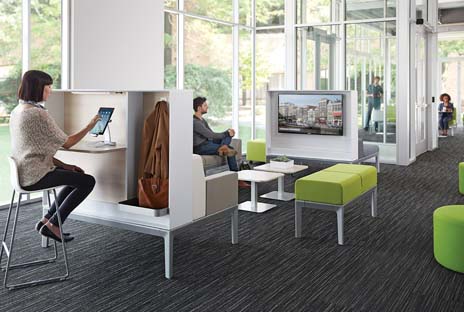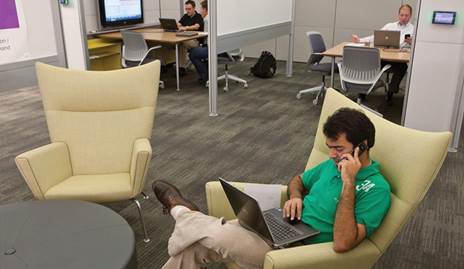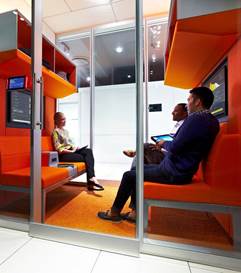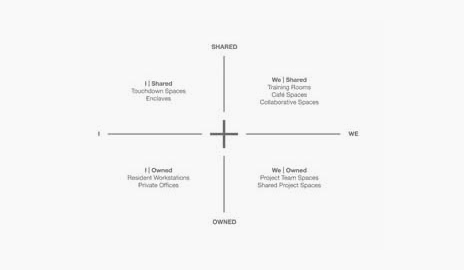Creating places where employees choose to work—not because they have to but because they want to.
In corporate boardrooms around the world, CEOs are recognizing that employee engagement is a serious, bottom-line issue, and that’s because there’s a clear correlation between engagement and performance. Yet, many organizations struggle to articulate the factors that impact employee engagement and few know how to improve it.
We believe place can help, and as we work with leading organizations we believe that an ‘office-renaissance’ is occurring. These organizations know they need to bring their people together, but also know it needs to be in a place that does something different than what it’s done in the past.

At Hub and Steelcase we understand that when people can come together with a shared purpose in a place that delivers not only what they want, but the things they need, it can activate engagement by enhancing their physical, cognitive and emotional wellbeing.

These places need to be designed as destinations that offer users choice and control over where and how they work, incorporating a palette of places that support a range of postures, presence and privacy and offer a balance of places for “I” work and “we” work with some that are “owned” and some that are “shared”.

Essentially, the office needs to become an ecosystem of interconnected and interdependent spaces that support the physical, cognitive and emotional wellbeing of people, and that’s how place can help to improve engagement and organizational performance.
That’s the power of place.
Ways People Work

Workplaces designed for an interconnected world offer the right blend of spaces and solutions to support the ways people work.
They include the right mix of…
- I spaces for individual work
- We spaces for group work
- Owned spaces that people can count on
- Shared spaces used by multiple people across the organization
This approach recognizes that people need to do both individual and collaborative work. And it breaks the paradigm that all individual spaces should be assigned or “owned” or that all group spaces should be “shared.
For more information click here.
